—
Compiled by Paul C. Focazio, New York Sea Grant
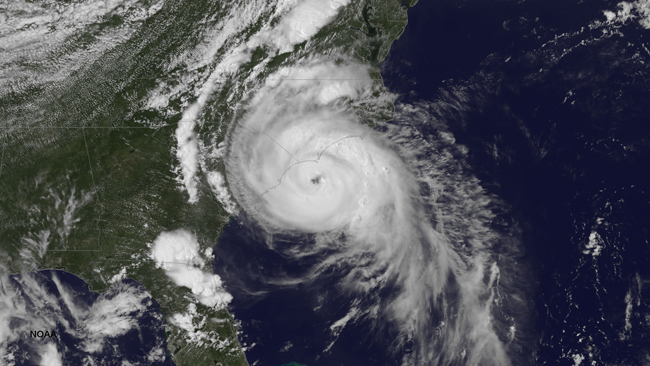
A satellite image of Hurricane Arthur, July 3, 2014. Arthur, which formed off the coast of Florida just ahead of the July 4th holiday weekend, was the first named storm of the 2014 Atlantic hurricane season. Photo: The National Oceanic and Atmospheric Administration (NOAA).
Washington, D.C., November 24, 2014 - The Atlantic hurricane season will officially end November 30, and will be remembered as a relatively quiet season as was predicted. Still, the season afforded NOAA scientists with opportunities to produce new forecast products, showcase successful modeling advancements, and conduct research to benefit future forecasts.
“Fortunately, much of the U.S. coastline was spared this year with only one landfalling hurricane along the East Coast. Nevertheless, we know that’s not always going to be the case,” said Dr. Louis Uccellini, Director of NOAA’s National Weather Service. “The ‘off season’ between now and the start of next year’s hurricane season is the best time for communities to refine their response plans and for businesses and individuals to make sure they’re prepared for any potential storm.”
How the Atlantic Basin seasonal outlooks from NOAA’s Climate Prediction Center verified:

A combination of atmospheric conditions acted to suppress the Atlantic hurricane season, including very strong vertical wind shear, combined with increased atmospheric stability, stronger sinking motion and drier air across the tropical Atlantic,” said Dr. Gerry Bell, lead hurricane forecaster at NOAA’s Climate Prediction Center. “Also, the West African monsoon was near- to below average, making it more difficult for African easterly waves to develop.”
As part of its efforts to provide better products and services, NOAA's National Weather Service (NWS) introduced many new and experimental products this season, some of which were announced at late-May's news conference on the outlook for the 2014 Atlantic hurricane season. New York Sea Grant was in attendance for the NOAA/NWS announcement at Brooklyn's New York City Office of Emergency Management - see related news item: "
NOAA and Sea Grant Issue 2014 Atlantic Hurricane Season Outlook in NYC."
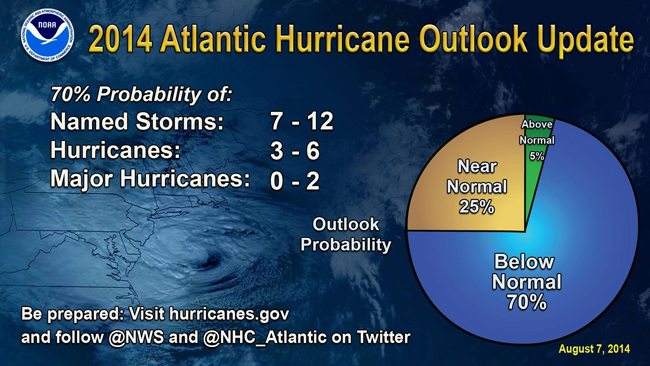
Forecasters with NOAA’s Climate Prediction Center raised the likelihood for a below-normal season in early-August's update to the Atlantic Hurricane Season Outlook. The update predicted a 70 percent chance of a below-normal season, a 25 percent chance of a near-normal season and only a five percent chance of an above-normal season. The probabilities in the initial outlook issued on May 22 were 50 percent, 40 percent and 10 percent, respectively.
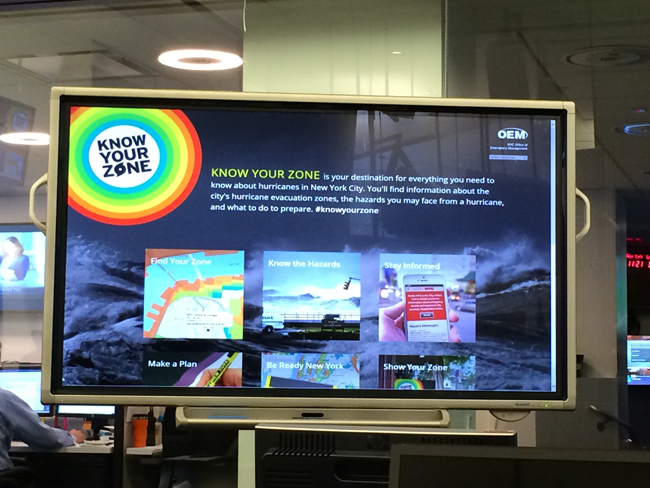
Also this season, NOAA and its partners launched a new campaign encouraging everyone in and near coastal communities to "Know Your Zone." In case an evacuation is required due to severe weather, the take home message is: Know your zone (there are six in the New York City area), Know that you need to go, When you need to go and go. More info at
www.nyc.gov/knowyourzone.
Photo: Paul C. Focazio, NYSG

Members of FEMA Corps Team Otter 2 inform New York City residents about new evacuation zones at the kickoff of the the 11th Annual National Preparedness month in Herald Square on September 5, 2014.
Photo: K.C.Wilsey/FEMA
September brought "National Preparedness Month" and, along with it, plenty of social media posts, e-mail reminders and public service announcements about the importance of preparing for disasters.
But, as emphasized by primary campaign supporters NOAA and the Federal Emergency Management Agency (FEMA), "no reminder, activity or promotion is as meaningful and as impactful as the one you take for your own life and for that of your family."
Branding all of its related social media messages throughout the month with #NatlPrep, both agencies urged folks to begin by taking one step past the point at which they were this time last year, and move towards being better prepared in 2014. Here are some of their key suggestions:
(1) It's so important to have both an evacuation and communication plan in place. Have peace of mind when a disaster strikes and create your evacuation and emergency communication plans. For more tips and information visit:
www.ready.gov/make-a-plan.
(2) Read more about
going beyond 'the plan.'
(3) Some family members may need extra items in an emergency. Don’t forget to include these items in your
emergency kit!
(4) For storm information specific to your area, including possible inland watches or warnings, go to your local U.S. National Weather Service Web site,
www.weather.gov.
(5) Hurricanes - which can produce winds exceeding 155 miles per hour as
well as tornadoes and mircrobursts - have the potential to cause
catastrophic damage to coastlines and several hundred miles inland. Find tips and preparedness lists at
www.ready.gov/hurricanes and
www.hurricanes.gov For mobile users, visit
www.hurricanes.gov/mobile and
mobile.weather.gov for the latest weather updates on your smartphone or tablet.
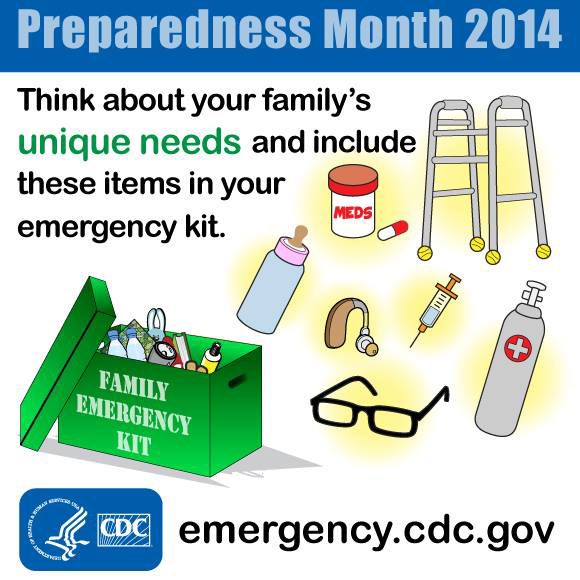
The Atlantic hurricane season lasts from June to November, with the peak season from mid-August to late October. 2015's season begins June 1 for the Atlantic Basin and central North Pacific, and on May 15 for the eastern North Pacific. NOAA will issue seasonal outlooks for all three basins in May. Learn how to prepare at
hurricanes.gov/prepare and FEMA’s
Ready.gov.

Monday, December 1st marked the end of the 2014 Atlantic hurricane season. Thankfully, this season was a quiet one for NYC, but it's important to be prepared. Remember: you can visit
NYC.gov/knowyourzone any time to find information about the city's hurricane evacuation zones, the hazards you may face from a hurricane, and what to do to prepare.
#knowyourzone
All of New York Sea Grant's related content is archived at
www.nyseagrant.org/superstormsandy and linked from NYSG's Hurricane Education Resource site,
www.nyseagrant.org/hurricane.
Also, we have news related to our Coastal Storms Awareness Program, a multi-year, multi-million dollar social science-based, community-focused partnership with NOAA, and Sea Grant programs in New Jersey New York and Connecticut. You can learn more about the projects funded and some of the stories up to this point at
www.nyseagrant.org/csap.
NOAA's Winter Outlook
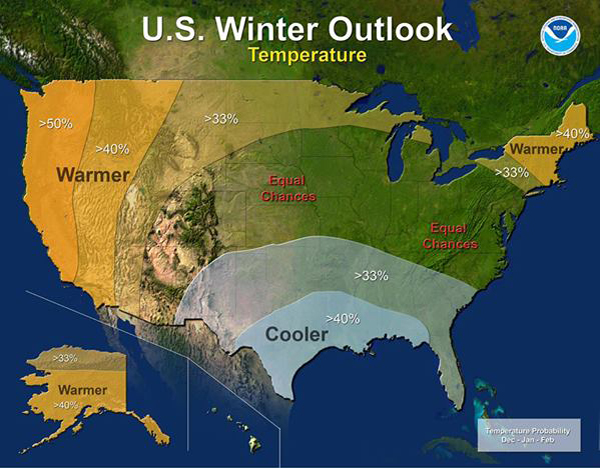
So, what is likely in store for us this winter? In mid-October, NOAA provided its
2014-2015 Winter Outlook, which includes detailed maps, video and a detailed transcript from NOAA meterologist Mike Halpert, who breaks down the Climate Prediction Center's seasonal climate predictions.
Also, in preparation for what’s most likely in store, scientists at NOAA’s Climate Prediction Center released the U.S. Winter Outlook. Help NOAA create a
Weather-Ready Nation — check out the December - February forecast for your area and begin preparing today...
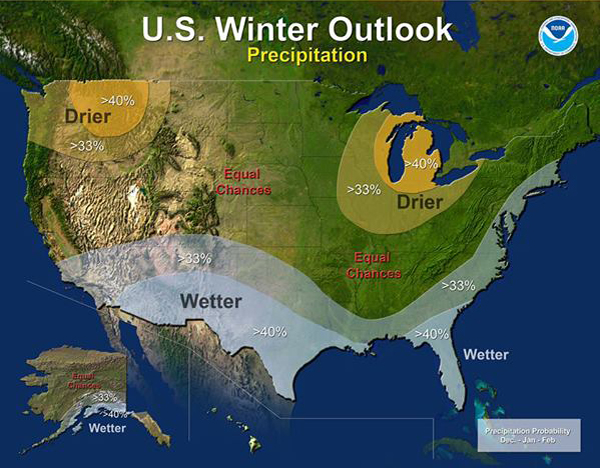
Be Your Own Weather-Ready Nation Ambassador
For updates on weather, climate and more, follow NOAA, NWS and others via, respectively, the Web, on Facebook and Twitter ...
- NOAA — www.noaa.gov, www.facebook.com/NOAA, @NOAA
- NOAA Climate.gov — www.climate.gov, www.facebook.com/NOAAClimateGov, @NOAAClimate
- U.S. National Weather Service — www.weather.gov, www.facebook.com/NWS, @NWS
- U.S. National Weather Service New York — www.weather.gov/nyc, www.facebook.com/NWSNewYorkNY, @NWSNewYork
- NOAA NWS Climate Prediction Center — www.cpc.ncep.noaa.gov, www.facebook.com/NWSCPC
- NOAA's National Climatic Data Center — www.ncdc.noaa.gov, www.facebook.com/NOAANationalClimaticDataCenter, @NOAANCDC
- NOAA Center for Weather & Climate Prediction — www.wpc.ncep.noaa.gov, www.facebook.com/pages/NOAA-Center-for-Weather-Climate-Prediction/476155942419392
- Cornell Cooperative Extension's NY Extension Disaster Education Network (NY EDEN) — www.eden.cce.cornell.edu, www.facebook.com/CceEden, @CCE_Disaster
More Info: NOAA
NOAA's mission is to understand and predict changes in the Earth's
environment, from the depths of the ocean to the surface of the sun, and
to conserve and manage our coastal and marine resources. Join NOAA on Twitter, Facebook and our other social media channels and visit the organization's news release archive.
More Info: New York Sea Grant
New York Sea Grant (NYSG), a cooperative program of Cornell University
and the State University of New York, is one of 33 university-based
programs under the National Sea Grant College Program (NSGCP) of the
National Oceanic and Atmospheric Administration (NOAA). The NSGCP
engages this network of the nation’s top universities in conducting
scientific research, education, training and extension projects designed
to foster science-based decisions about the use and conservation of our
aquatic resources. Through its statewide network of integrated
services, NYSG has been promoting coastal vitality, environmental
sustainability, and citizen awareness about the State’s marine and Great
Lakes resources since 1971.
For updates on Sea Grant activities: www.nyseagrant.org has RSS, Facebook, Twitter, and YouTube links. NYSG also offers a free e-list sign up via www.nyseagrant.org/coastlines for NY Coastlines, its flagship publication, which, in 2014, merges with the program's e-newsletter, Currents. NY Coastlines is published several times a year.